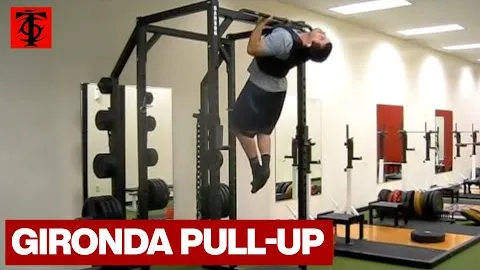


Chin-ups are an excellent compound exercise that targets multiple muscles in your upper body, including the back, shoulders, and arms. This bodyweight exercise not only helps to build strength and definition but also improves posture and grip strength. Incorporating chin-ups into your workout routine can yield impressive results, making it a valuable addition to any strength training program. In this article, we will explore the benefits of chin-ups, proper form and technique, and different variations to challenge yourself as you progress.
Building Upper Body Strength: Chin-ups primarily target the latissimus dorsi, or the lats, which are the largest muscles in your back. This exercise also engages the biceps, forearms, shoulders, and upper chest, making it an effective way to build overall upper body strength.
Increasing Muscle Definition: Chin-ups allow you to specifically target and develop the muscles in your back, shoulders, and arms. By consistently challenging these muscles, you can achieve a lean and defined upper body.
Improving Posture: The muscles strengthened during chin-ups play a crucial role in maintaining good posture. Strengthening your upper back and shoulder muscles helps to counterbalance the forward-slumping posture often associated with prolonged sitting or desk work.
Enhancing Grip Strength: Since chin-ups involve hanging from a bar, they require strong grip strength to execute properly. By performing chin-ups regularly, you can improve your ability to grip and hold onto objects in other exercises and everyday activities.
Convenience: One of the major advantages of chin-ups is that they can be performed using minimal equipment. All you need is a sturdy overhead bar, making this exercise accessible to people who prefer working out at home or have limited access to a gym.
To perform a chin-up correctly and maximize the benefits, follow these steps:
Grab the Bar: Begin by gripping the bar with your palms facing towards you, slightly wider than shoulder-width apart. Ensure that your grip is comfortable and secure.
Hang and Brace: Hang from the bar with your arms fully extended, shoulders engaged, and core muscles braced. This is your starting position.
Pull Up: Initiate the movement by squeezing your shoulder blades together and engaging your back muscles. As you pull yourself up towards the bar, focus on using your upper back and arm muscles rather than relying solely on your biceps.
Chin Above the Bar: Continue pulling yourself up until your chin is above the bar. Keep your elbows close to your body throughout the movement.
Lower Slowly: Control the descent by slowly releasing the tension and returning to the starting position. Avoid dropping or swinging your body, as this reduces the effectiveness of the exercise.
Once you have mastered the basic chin-up, you can challenge yourself further by incorporating these variations into your routine:
Wide Grip Chin-up: Perform the chin-up with your hands placed wider than shoulder-width apart. This variation emphasizes the outer muscles of the back, including the teres major and posterior deltoids.
Weighted Chin-up: Use a weight belt or hold a dumbbell between your feet to add resistance and increase the difficulty of the exercise. Start with a manageable weight and gradually progress as your strength improves.
Assisted Chin-up: If you find chin-ups challenging, you can use an assisted pull-up machine, resistance bands, or have a partner assist you by providing upward support. This allows you to gradually build strength until you can perform unassisted chin-ups.
Close Grip Chin-up: Perform the chin-up with your hands placed close together, about shoulder-width apart or even narrower. This variation primarily targets the biceps and middle back muscles, such as the rhomboids and lower traps.
L-sit Chin-up: During the ascent, lift your legs in front of you, bringing them parallel to the ground to form an "L" shape. This variation requires increased core stability, as well as upper body strength.
Incorporating chin-ups into your workout routine can enhance your upper body strength, muscle definition, posture, and grip strength. By following proper form and incorporating variations as you progress, you can continue challenging yourself and enjoying the numerous benefits of this powerful compound exercise. Remember to start with the basic chin-up, gradually increase your repetitions, and consider adding weight or trying different grip variations to keep challenging your muscles, leading to optimal strength and definition over time.
If you're looking for a gym, fitness club or yoga studio, you've come to the right place.
You can find information about gyms in your area. Browse catalog of gyms and find gyms with classes which are you looking for.
On gym page you can find simple information like address, phone or website. You can find list of available classes. You can check availability of personal training or small group classes. On place page you can also see information about open hours.
You can find gyms near you with amenities, courts, studios and equipments.
Use our map to find gym at your city or district.
In Gym Navigator you can find list of exercises with movies for many body parts.
You can browse exercises catalog and find exercises the best of you.
You can also find exercises grouped into workout plans, which you can use to improve you body. Each routine show you exercises one by one and give you possibility to count you progress and count down rest time.